Part 13: December 8 Broadcast

You are listening to BBC radio 4. In an hour, we’ll be discussing the possible true history of Christ as a human. For the next hour, Professor David Stephenson will be presenting a documentary on the second 80 years war of the eighteenth century. This series will be running every third day, up to 50 episodes. If you want news of the current war in the Middle East please channel in to BBC radio 1.
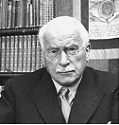 Good evening, and welcome to BBC radio 4. I’m Professor David Stephenson, professor of Dutch historical studies at Cambridge. This is the thirteenth part of our 50 episode special on the second 80 years war over Europe. Joining me for these broadcasts are fellow researchers and scholars Doctor Albert Andrews, specialist in German studies from the Berlin academy, Professor Robert Lowe, specialist in French studies at Cambridge, and a graduate student and technical assistant, Anton Thatcher. Last week we discussed the recommencement of the Dutch offensive.
Good evening, and welcome to BBC radio 4. I’m Professor David Stephenson, professor of Dutch historical studies at Cambridge. This is the thirteenth part of our 50 episode special on the second 80 years war over Europe. Joining me for these broadcasts are fellow researchers and scholars Doctor Albert Andrews, specialist in German studies from the Berlin academy, Professor Robert Lowe, specialist in French studies at Cambridge, and a graduate student and technical assistant, Anton Thatcher. Last week we discussed the recommencement of the Dutch offensive. One of the most important offensive actions the Dutch would undergo was the battle over the Bahamas in the Americas. This tiny island held a massive British garrison that was threatening the flank of the St. Augustine garrison in Florida and prevented the Dutch from using Florida as a staging point to move northward. An army of marines and natives from Cuba and South America was shuttled in, marching quickly to Nassau. Camping down in the outskirts north of Nassau, the Dutch had set up to move out against the city garrison when the garrison came to them.
One of the most important offensive actions the Dutch would undergo was the battle over the Bahamas in the Americas. This tiny island held a massive British garrison that was threatening the flank of the St. Augustine garrison in Florida and prevented the Dutch from using Florida as a staging point to move northward. An army of marines and natives from Cuba and South America was shuttled in, marching quickly to Nassau. Camping down in the outskirts north of Nassau, the Dutch had set up to move out against the city garrison when the garrison came to them.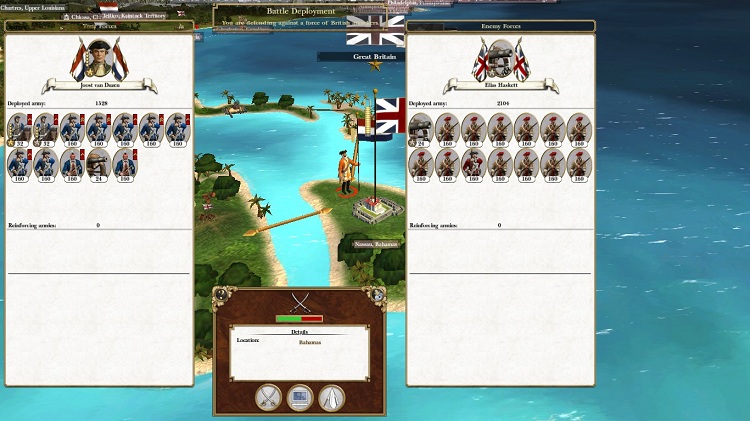
The Dutch are a few hours march from Nassau when they're intercepted.
 The Dutch army was outnumbered 2100 to 1500, but their army consisted primarily of veteran troops with plenty of experience against the Spanish. To compare, the British relied on fresh, untrained infantry. They were so low a priority that their uniforms were made of local woven cotton, and weren’t considered worth the expense of red dye.
The Dutch army was outnumbered 2100 to 1500, but their army consisted primarily of veteran troops with plenty of experience against the Spanish. To compare, the British relied on fresh, untrained infantry. They were so low a priority that their uniforms were made of local woven cotton, and weren’t considered worth the expense of red dye.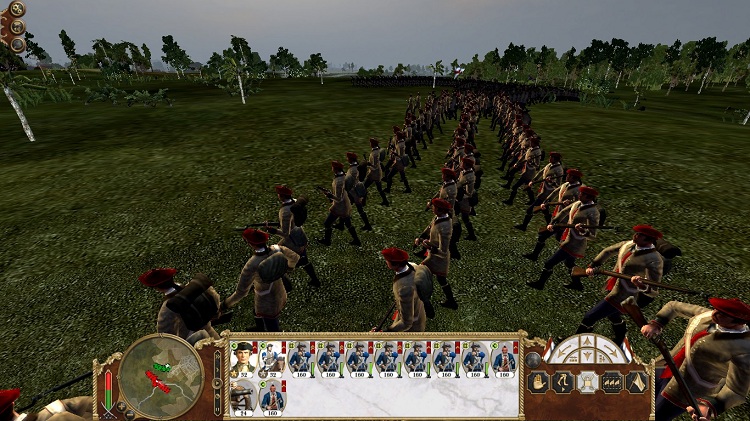
The British army couldn't even be called red coats.
 The British were advancing across the city primarily weighted left. The Dutch had to shift their entire line right to prevent their being flanked on both sides, anchoring their left with the city. By keeping their city along their left, they hoped to stop the overwhelming press of troops from overwhelming a flank. To stop the British from manoeuvering through the tight city streets, the hand axe armed native auxiliaries were kept in the streets, where the tight distances would prevent the British soldiers from firing on them. This further anchored the flank.
The British were advancing across the city primarily weighted left. The Dutch had to shift their entire line right to prevent their being flanked on both sides, anchoring their left with the city. By keeping their city along their left, they hoped to stop the overwhelming press of troops from overwhelming a flank. To stop the British from manoeuvering through the tight city streets, the hand axe armed native auxiliaries were kept in the streets, where the tight distances would prevent the British soldiers from firing on them. This further anchored the flank.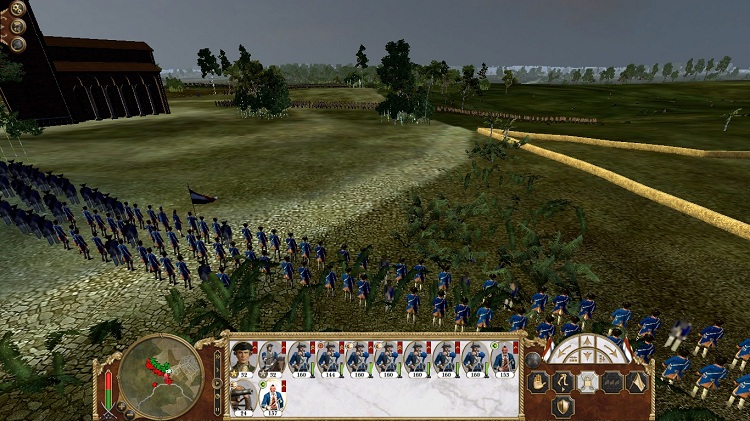
The Dutch anchored their left with the town. A church in particular.
 The British hoped to overwhelm small sections of lines, weighting their battalions along small sections of the Dutch front. On their right, the British pressed through the city streets as the Dutch predicted, threatening the flanks of the Dutch. On their left, they tried to lap around the Dutch flank with their greater numbers, forcing the Dutch to present a corner in their line as they formed a quarter circle at the end of their line.
The British hoped to overwhelm small sections of lines, weighting their battalions along small sections of the Dutch front. On their right, the British pressed through the city streets as the Dutch predicted, threatening the flanks of the Dutch. On their left, they tried to lap around the Dutch flank with their greater numbers, forcing the Dutch to present a corner in their line as they formed a quarter circle at the end of their line.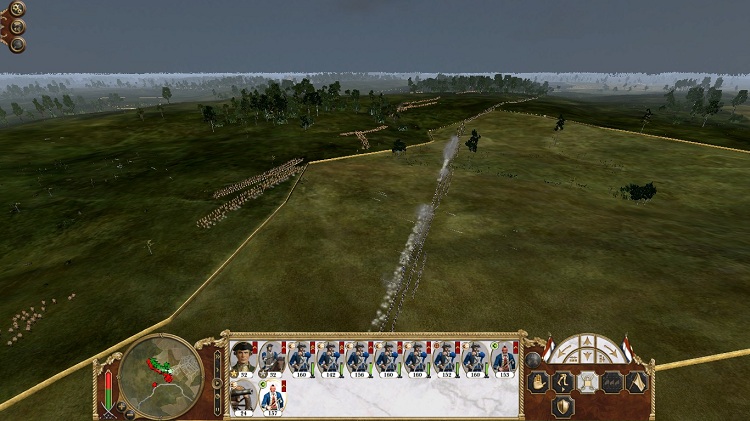
The British army had moved to double up their militia. Doing so gave their battalions the durability they needed to challenge the dutch line infantry, or at least keep them in place longer.
 Across the line, it was clear the Dutch were winning. The only respite the British could hope for was a flank collapsing. On the Dutch left, the Dutch were well prepared to negate such an action. The British soldiers were incapable of forming a firing line quickly enough to defeat the native auxiliary infantry, and were cut down in brutal hand to hand combat. 3 battalions were wiped out quickly by the Dutch on the flank presenting the Dutch army a chance to envelope the British right.
Across the line, it was clear the Dutch were winning. The only respite the British could hope for was a flank collapsing. On the Dutch left, the Dutch were well prepared to negate such an action. The British soldiers were incapable of forming a firing line quickly enough to defeat the native auxiliary infantry, and were cut down in brutal hand to hand combat. 3 battalions were wiped out quickly by the Dutch on the flank presenting the Dutch army a chance to envelope the British right.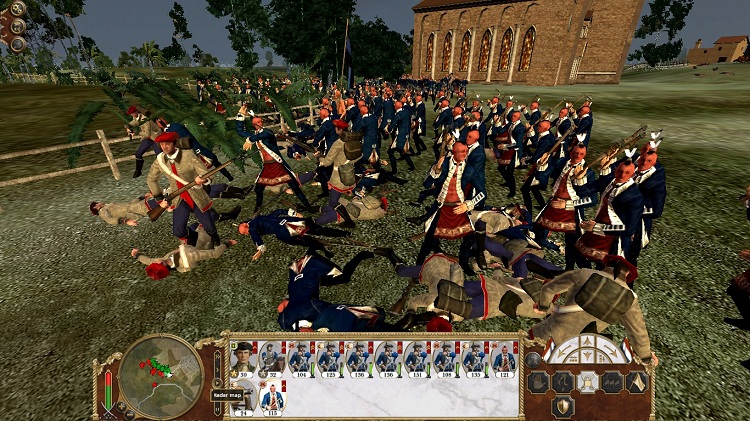
The British are caught up on the native auxiliaries. The Dutch natives were outnumbered 3 to 2, but they held a very decisive advantage in the choked streets.
 Blood soaked natives pouring out of the town into the right flank of the British army caused a very rapid rout of the center right. This freed the Dutch center to assist the beleaguered right flank while the victorious native auxiliaries headed to the back lines of the British force to spike their cannons.
Blood soaked natives pouring out of the town into the right flank of the British army caused a very rapid rout of the center right. This freed the Dutch center to assist the beleaguered right flank while the victorious native auxiliaries headed to the back lines of the British force to spike their cannons.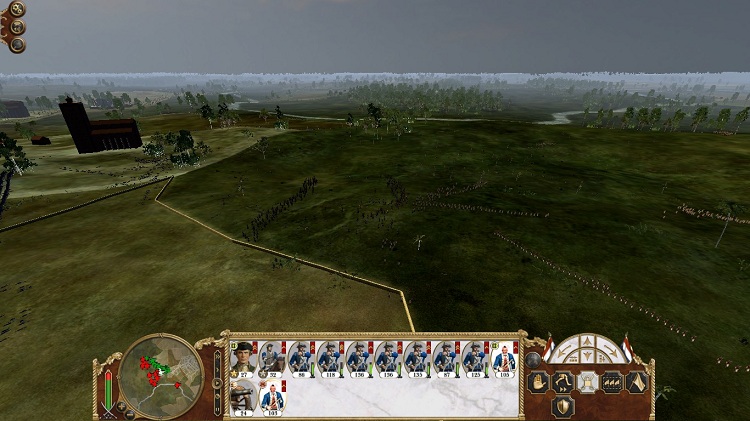
The Dutch left flank rolls over the British Right.
 As the Dutch shattered the right flank of the British army, they shattered resistance as they moved up the lines taking apart the British part by part. It didn’t take long for the Dutch to completely push the British off the field.
As the Dutch shattered the right flank of the British army, they shattered resistance as they moved up the lines taking apart the British part by part. It didn’t take long for the Dutch to completely push the British off the field.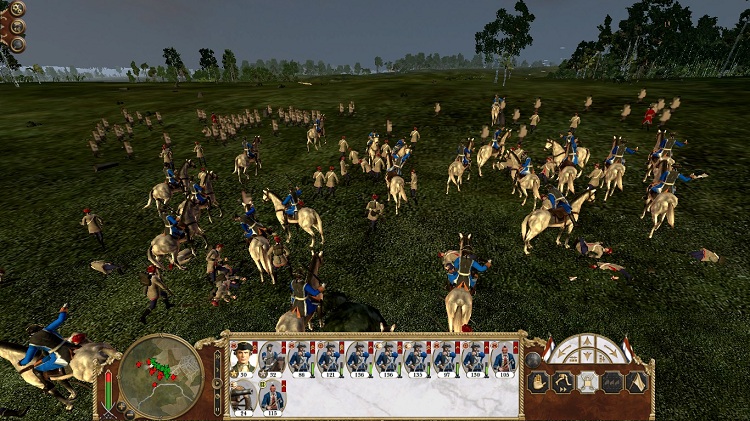
The British center falls. Cavalry springs on them as they flee.
 At days end, the British had lost 1600 men, while the Dutch had only lost 400. The tremendous difference could have been somewhat mitigated if the Dutch had been forced to attack British fortifications, but as the city of Nassau was unprotected by forts and walls, the British inability to take either Dutch flank spelled their doom. Hedging their bets and moving troops to flank from both sides had been over ambitious. The British perhaps could have won if they had weighted their entire force to their left flank, letting them defeat the Dutch right while losing their own right, falling back to straighten their lines forming a new front, and then attacking while the Dutch left flank struggled to get into position. Instead, the Dutch had pushed back the British leaving Nassau ripe for the taking.
At days end, the British had lost 1600 men, while the Dutch had only lost 400. The tremendous difference could have been somewhat mitigated if the Dutch had been forced to attack British fortifications, but as the city of Nassau was unprotected by forts and walls, the British inability to take either Dutch flank spelled their doom. Hedging their bets and moving troops to flank from both sides had been over ambitious. The British perhaps could have won if they had weighted their entire force to their left flank, letting them defeat the Dutch right while losing their own right, falling back to straighten their lines forming a new front, and then attacking while the Dutch left flank struggled to get into position. Instead, the Dutch had pushed back the British leaving Nassau ripe for the taking.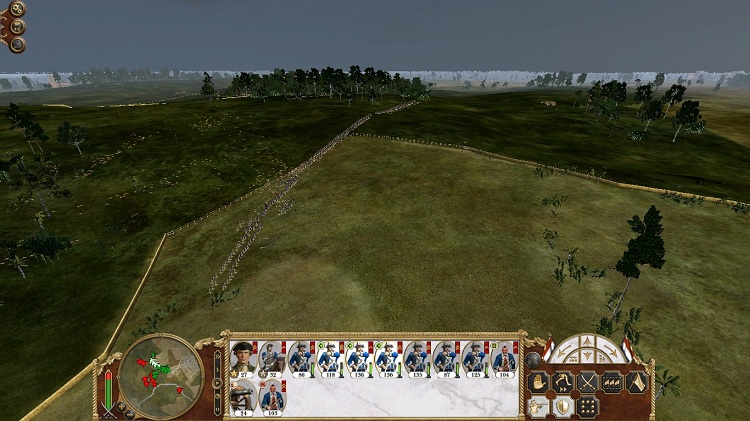
The British couldn't commit to taking one flank or the other. The Dutch committed to holding, then destroying the British right while merely keeping the British left in check. Britain, having split their commitments couldn't defeat the Dutch.
 The Dutch pressed onward taking the fight into Nassau proper where the fighting would take place directly in the midst of crowded city streets. Rather than trying to form a line of battle, Dutch infantry moved forward quickly to take control of houses and mansions with good vantage points into the street. These armed houses would provide strong, covered fire for the infantry to fire down on the British while the native auxiliaries went to work clearing out men in the streets, or in assaulting buildings held by the British.
The Dutch pressed onward taking the fight into Nassau proper where the fighting would take place directly in the midst of crowded city streets. Rather than trying to form a line of battle, Dutch infantry moved forward quickly to take control of houses and mansions with good vantage points into the street. These armed houses would provide strong, covered fire for the infantry to fire down on the British while the native auxiliaries went to work clearing out men in the streets, or in assaulting buildings held by the British.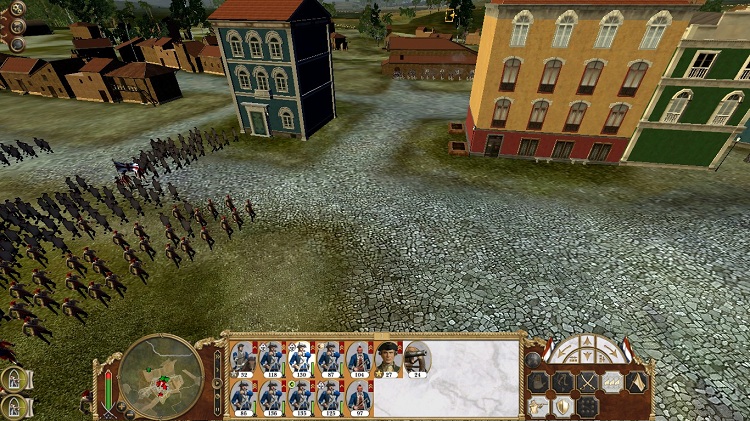
Britain wanted to fight in the streets since it would prevent the Dutch from using their entire force at once.
 By now, the British had somewhat learned their lesson, and focused their attack on a small battalion of men guarding the flanks of an occupied building. Rather than trying to shoot it out with these men while providing some fire into the building, three British battalions massed for an assault on the thin line of covering troops.
By now, the British had somewhat learned their lesson, and focused their attack on a small battalion of men guarding the flanks of an occupied building. Rather than trying to shoot it out with these men while providing some fire into the building, three British battalions massed for an assault on the thin line of covering troops.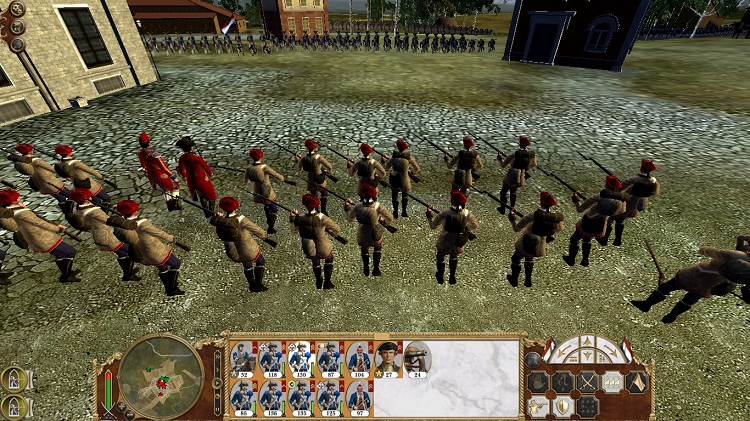
The British assaulting a thin line of Dutch infantry, hoping to break them one battalion at a time.
 However, after the previous battle, the British could no longer afford that sort of mass, and the native auxiliaries moved in around some small homes to attack the British in the rear. After this action, the Dutch simply had their native allies run down any men caught out in the streets while fire from the houses and windows kept the few remaining British troops pinned down.
However, after the previous battle, the British could no longer afford that sort of mass, and the native auxiliaries moved in around some small homes to attack the British in the rear. After this action, the Dutch simply had their native allies run down any men caught out in the streets while fire from the houses and windows kept the few remaining British troops pinned down.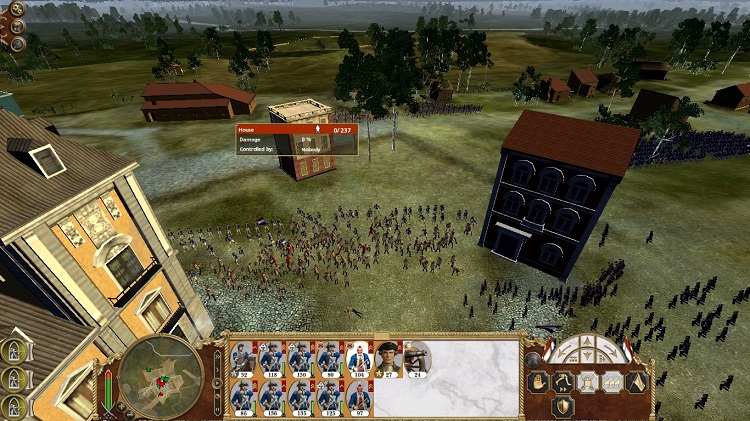
The native auxiliaries could easily flank the closely massed British infantry, enveloping them from behind. The natives would go building to building and street to street following the sounds of gunfire from the houses taken by the Dutch and besieged by the English.
 Their flank secured, the Dutch set the majority of their forces in the Bahamas to Florida, freeing the St. Augustine garrison to take Savannah in Georgia. Though still threatened to the west by the Cherokee, with the additional troops from the Bahamas, the Dutch could advance North West and directly North.
Their flank secured, the Dutch set the majority of their forces in the Bahamas to Florida, freeing the St. Augustine garrison to take Savannah in Georgia. Though still threatened to the west by the Cherokee, with the additional troops from the Bahamas, the Dutch could advance North West and directly North.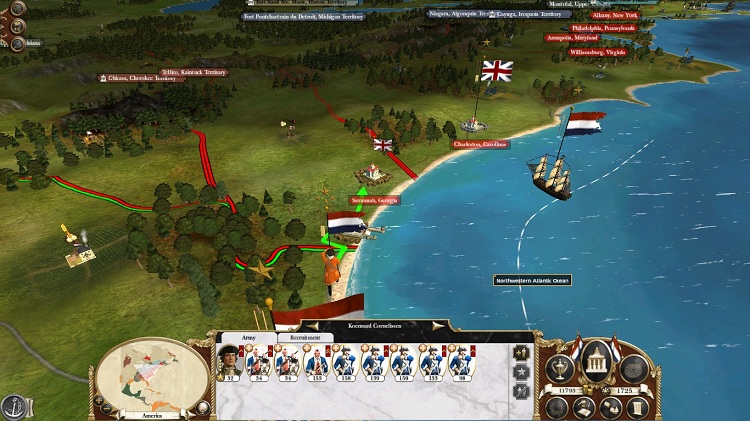
Now with Nassau taken, the Dutch advance to Savannah.
 This had somewhat vindicated the very limited funding the Dutch Americas had received for their armies. With limited opposition, a larger Dutch army likely could have moved much farther, much faster, certainly, but the Dutch forces present were still sufficient to take apart the limited British forces, so long as they didn’t over extend their lines.
This had somewhat vindicated the very limited funding the Dutch Americas had received for their armies. With limited opposition, a larger Dutch army likely could have moved much farther, much faster, certainly, but the Dutch forces present were still sufficient to take apart the limited British forces, so long as they didn’t over extend their lines. To contrast, the Dutch in India had expended an exorbitant amount of money in infantry and replacements, and despite had received very limited gains. They had taken control of Hyderabad, and were still besieging Satara, which after 2 years was forced to engage the Dutch.
To contrast, the Dutch in India had expended an exorbitant amount of money in infantry and replacements, and despite had received very limited gains. They had taken control of Hyderabad, and were still besieging Satara, which after 2 years was forced to engage the Dutch.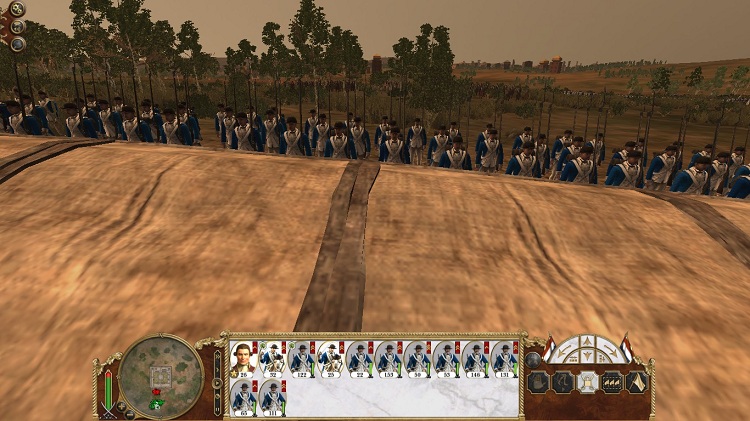
The Dutch over their time in Satara had amassed a wide front of dirt and wood field fortifications.
 Their forces were badly battered due to the constant strain of the siege, and by then the Dutch had taken a strong defensive position around them. The last remnants of their army marched out to face Dutch infantry that had formed strong walls of mounded up dirt and trenches which provided ample cover to the infantry against cannon fire and small arms fire. Their own cannons fired into the Maratha forces as they advanced, and the hail of bullets from the Dutch improvised wall eliminated the last of the Maratha resistance almost immediately.
Their forces were badly battered due to the constant strain of the siege, and by then the Dutch had taken a strong defensive position around them. The last remnants of their army marched out to face Dutch infantry that had formed strong walls of mounded up dirt and trenches which provided ample cover to the infantry against cannon fire and small arms fire. Their own cannons fired into the Maratha forces as they advanced, and the hail of bullets from the Dutch improvised wall eliminated the last of the Maratha resistance almost immediately.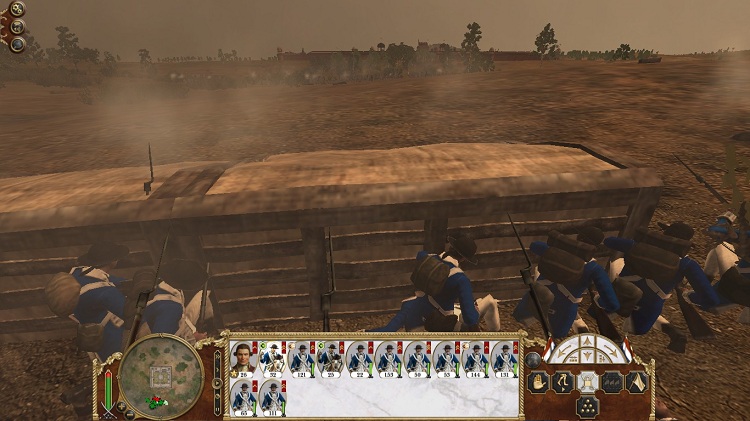
The Dutch easily pushed the starved Marathas back into their fortress, using their dirt blockades to reduce casualties.
 Though far away, the battle in Morocco at Tangier unfolded very similarly. The same walls, the same heavily depleted force of defenders forced by starvation out into the field saw the Dutch quickly repel the North African army who capitulated, their stores of food and water having run dry.
Though far away, the battle in Morocco at Tangier unfolded very similarly. The same walls, the same heavily depleted force of defenders forced by starvation out into the field saw the Dutch quickly repel the North African army who capitulated, their stores of food and water having run dry.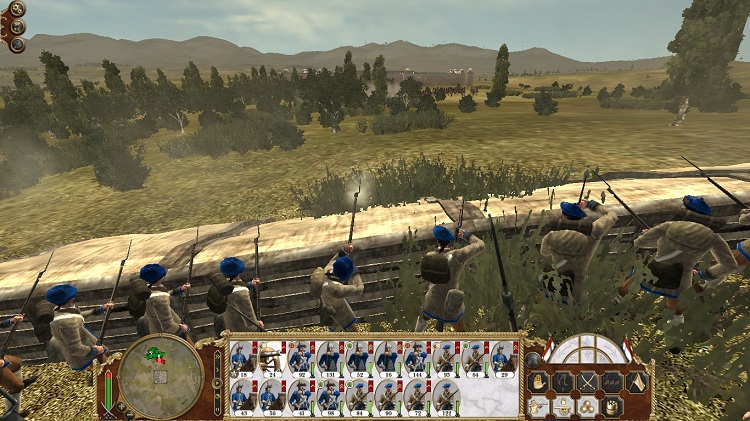
The attempted breakthrough at Tangiers. The battle looked much like Satara.[/i]
 Only the siege around Munich went differently. While the Dutch professional army had been pursuing the small Northern Bavarian army, and had whittled it down to a fraction of its original size, a small portion still made it back to Bavaria. Similarly, Ouwerkerk had repeatedly harassed and attacked the garrison of Munich, reducing their force to a fairly small size. With a free ability to replenish his battalions, while the Bavarians could not, the Dutch had slowly managed to surpass their garrison in size.
Only the siege around Munich went differently. While the Dutch professional army had been pursuing the small Northern Bavarian army, and had whittled it down to a fraction of its original size, a small portion still made it back to Bavaria. Similarly, Ouwerkerk had repeatedly harassed and attacked the garrison of Munich, reducing their force to a fairly small size. With a free ability to replenish his battalions, while the Bavarians could not, the Dutch had slowly managed to surpass their garrison in size.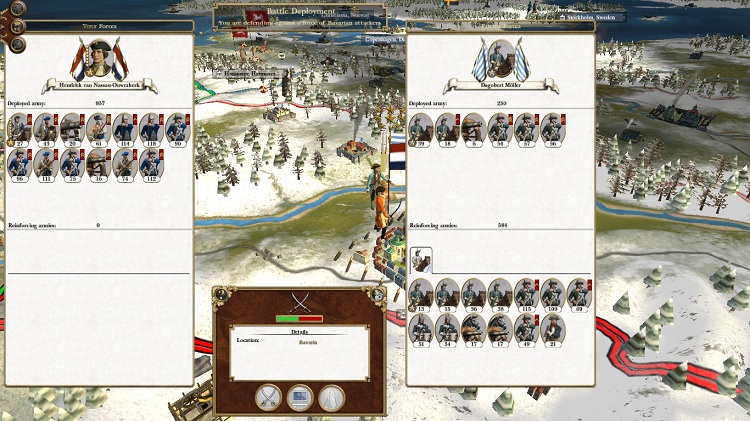
The Dutch had skirmished with the Bavarians in Munich without committing to a siege or a solid breakthrough. The Dutch army and the Bavarian army were both severely weakened by this time.
 In this case, the Dutch were caught by the smaller Bavarian army moving to reinforce the Munich garrison. Attacking the Dutch, the small army was joined by the Munich garrison and began advancing on the Dutch position.
In this case, the Dutch were caught by the smaller Bavarian army moving to reinforce the Munich garrison. Attacking the Dutch, the small army was joined by the Munich garrison and began advancing on the Dutch position.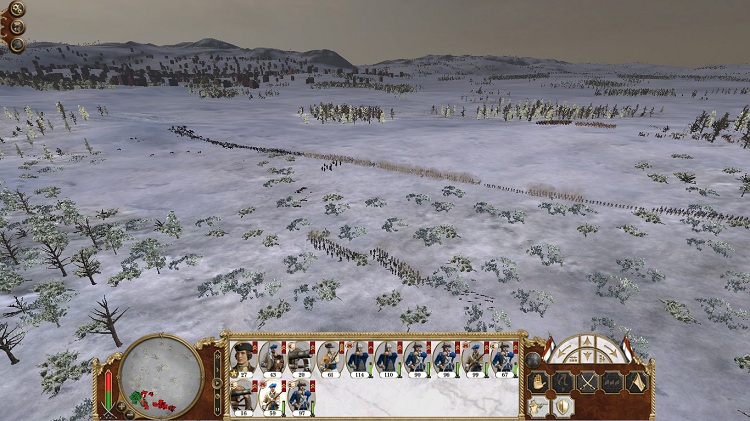
The Dutch and Bavarians marched to within gunshot of one another before they even knew the other was there.
 While Ouwerkerk was able to gain reinforcements for his army, repeated skirmishes with the Munich garrison had sharply reduced the size of his forces over the years. What hadn’t been severely reduces, were his cannons.
While Ouwerkerk was able to gain reinforcements for his army, repeated skirmishes with the Munich garrison had sharply reduced the size of his forces over the years. What hadn’t been severely reduces, were his cannons. Cannon fire placed well on a commanding hilltop position, the Dutch were able to fire at the attacking Bavarian forces, causing them to move forward before the Munich garrison could catch up. This small force managed to get into the Dutch infantry, causing a few casualties, but they were unable to significantly reduce them enough for the second wave to defeat them.
Cannon fire placed well on a commanding hilltop position, the Dutch were able to fire at the attacking Bavarian forces, causing them to move forward before the Munich garrison could catch up. This small force managed to get into the Dutch infantry, causing a few casualties, but they were unable to significantly reduce them enough for the second wave to defeat them. 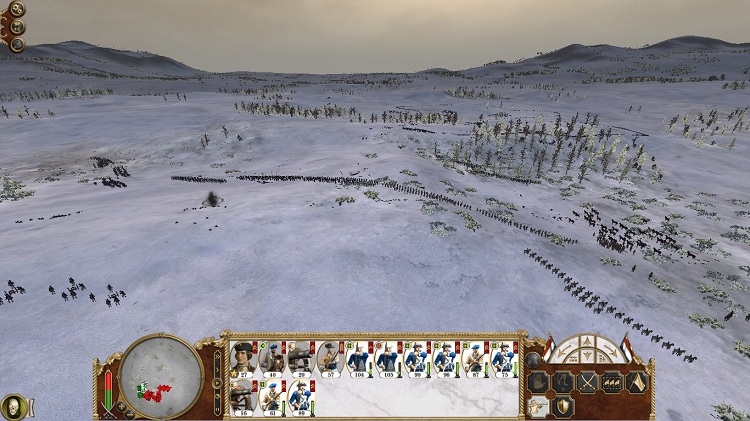
The Dutch cannons were in a commanding position, and well defended by infantry.
 The remaining Bavarian army was able to get to the Dutch lines and form up, but the Dutch forces had the superior position. The Bavarian cavalry managed to tie down and do good damage to a battalion of militia, but were driven back and destroyed when the Dutch reinforced them with their own cavalry.
The remaining Bavarian army was able to get to the Dutch lines and form up, but the Dutch forces had the superior position. The Bavarian cavalry managed to tie down and do good damage to a battalion of militia, but were driven back and destroyed when the Dutch reinforced them with their own cavalry.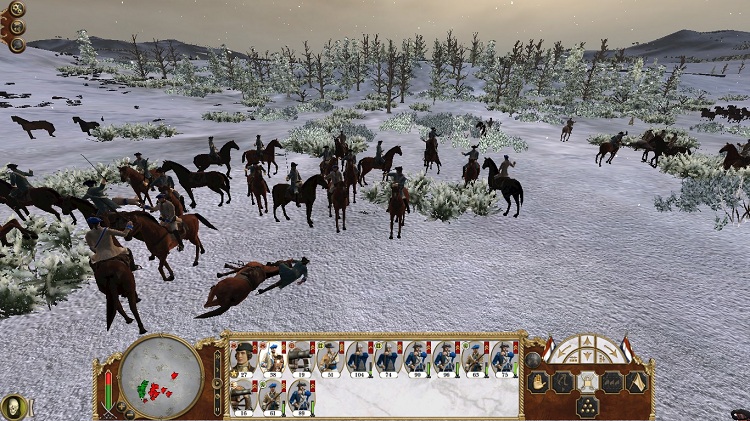
The Dutch cavalry is needed to drive the Bavarian dragoons off of the militia.
 Following through with the destruction of the Bavarian cavalry, the Dutch cavalry was able to move forward, taking apart the Bavarian artillery as well. Without artillery fire, the Dutch forces had a significant advantage in the musket fight, and the Bavarians were quickly set to flight.
Following through with the destruction of the Bavarian cavalry, the Dutch cavalry was able to move forward, taking apart the Bavarian artillery as well. Without artillery fire, the Dutch forces had a significant advantage in the musket fight, and the Bavarians were quickly set to flight.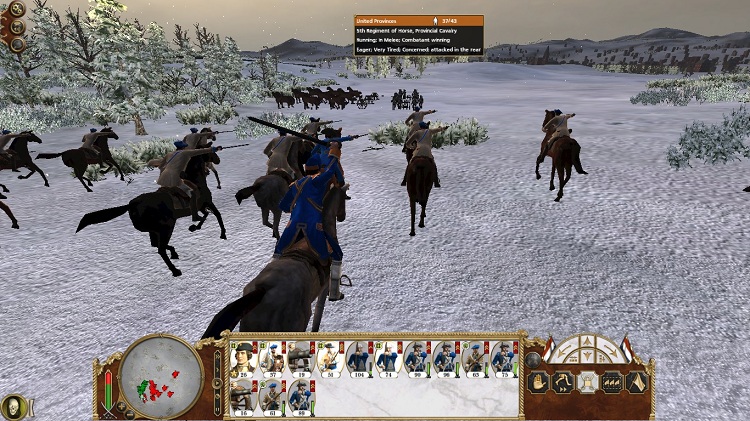
Dutch Gendarmerie were able to spike the Bavarian artillery. Without it, the Dutch were able to win in the musket fight without concern of artillery killing their own infantry.
 The Dutch have taken over all of their objectives over the past years in all fronts, and still no true opposition had arisen. The only large army capable of direct confrontation was the British force that had just abandoned Tunisia to the Corsairs to assault Morocco.
The Dutch have taken over all of their objectives over the past years in all fronts, and still no true opposition had arisen. The only large army capable of direct confrontation was the British force that had just abandoned Tunisia to the Corsairs to assault Morocco.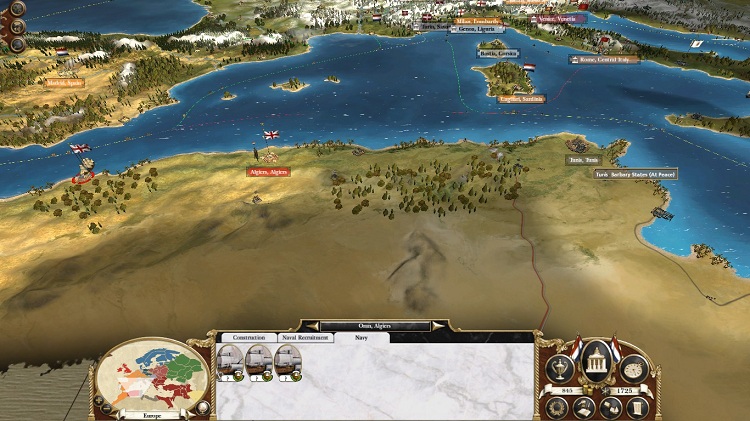
The Dutch sent Ganesvoort to root out the British army that their navy had spotted earlier, doubtful that the rebellion in Tunisia had destroyed it.
 Now, once again the Dutch cabinet, which had just achieved re-election, the Dutch government elected to hold their position. Troops would once again be required to police their new acquisitions, preventing them from advancing.
Now, once again the Dutch cabinet, which had just achieved re-election, the Dutch government elected to hold their position. Troops would once again be required to police their new acquisitions, preventing them from advancing.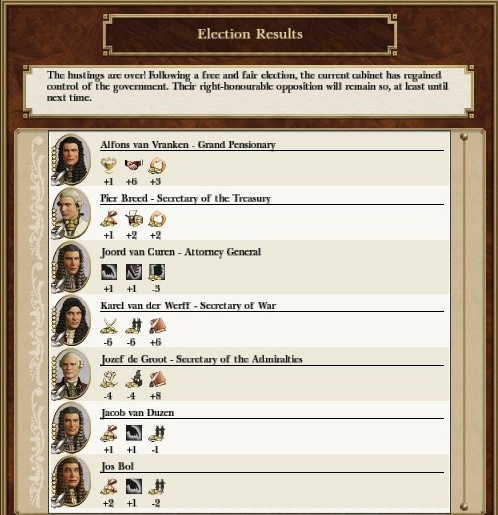
The Republican party is re-elected in 1726.
 By 1726, the Dutch armies had not expanded all that much from their numbers in 1724. Ever since the offensive had recommenced, the Dutch economy had moved to replenishing existing armies. With a new period of respite, the Dutch could take note that their total tax profits had doubled, meaning replenishment would be much faster than it had been in 1721. In fact, the Dutch had planned on expanding their army by an additional 2000 men across all theaters. These additions would allow armies to leapfrog positions. One army could move forward while another stayed behind to replenish and police.
By 1726, the Dutch armies had not expanded all that much from their numbers in 1724. Ever since the offensive had recommenced, the Dutch economy had moved to replenishing existing armies. With a new period of respite, the Dutch could take note that their total tax profits had doubled, meaning replenishment would be much faster than it had been in 1721. In fact, the Dutch had planned on expanding their army by an additional 2000 men across all theaters. These additions would allow armies to leapfrog positions. One army could move forward while another stayed behind to replenish and police.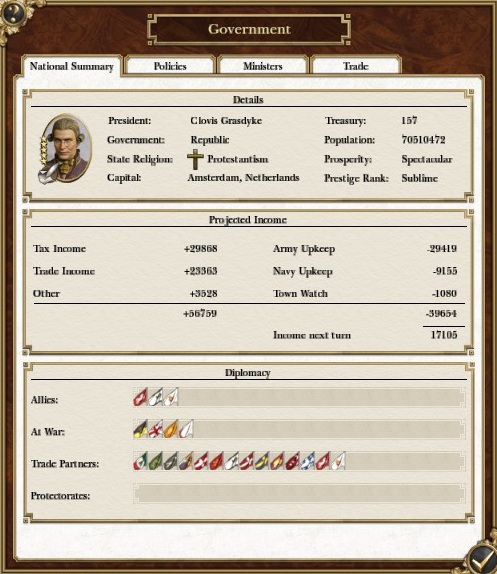
Dutch finances by 1726. The Dutch were netting considerably more profits, but their armies were still not growing.
 These forces for now would be focused primarily in India. With so many shared enemies in Europe, the Prussians had formed an alliance with the Dutch, making Europe far more secure, and less likely that the Dutch would have to attack Vienna. To knock Austria out of the war. The Dutch could have readied an army to attack Britain, but the Dutch by now considered moving Ouwerkerk’s forces back to Amsterdam to attack London, using the Prussians as a bulwark in the East against the Austrians.
These forces for now would be focused primarily in India. With so many shared enemies in Europe, the Prussians had formed an alliance with the Dutch, making Europe far more secure, and less likely that the Dutch would have to attack Vienna. To knock Austria out of the war. The Dutch could have readied an army to attack Britain, but the Dutch by now considered moving Ouwerkerk’s forces back to Amsterdam to attack London, using the Prussians as a bulwark in the East against the Austrians. Settling again into their comfortable routine of conquest and consolidation, the Dutch had to contend, once more with raiders across their borders. The most notable raid of the year had been an intense raid of Cherokee natives in Florida, which the Dutch moved out against. North of St. Augustine, the Dutch managed to catch up to the raiders, who turned to fight.
Settling again into their comfortable routine of conquest and consolidation, the Dutch had to contend, once more with raiders across their borders. The most notable raid of the year had been an intense raid of Cherokee natives in Florida, which the Dutch moved out against. North of St. Augustine, the Dutch managed to catch up to the raiders, who turned to fight.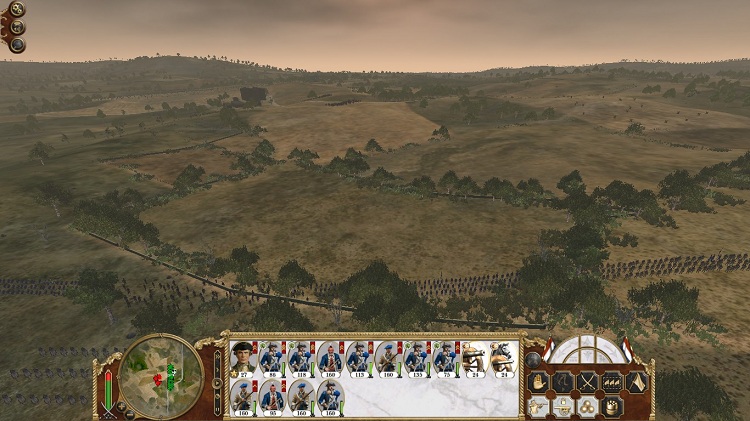
Dutch clash with native forces.
 The battle was notable in just how greatly it demonstrated the inadequacy of the native forces when arrayed against the European style armies. Cannon fire from the Dutch defeated most of the native cavalry, and their warrior societies soldiers were gunned down as they advanced into range to throw their iconic tomahawks. While the North American army moving west was only perhaps a thousand men, the Dutch reckoned that their army would be sufficient to defeat all of the Cherokee, which the Dutch estimated to be as many as 3000 men, including the several hundred they had just wiped out.
The battle was notable in just how greatly it demonstrated the inadequacy of the native forces when arrayed against the European style armies. Cannon fire from the Dutch defeated most of the native cavalry, and their warrior societies soldiers were gunned down as they advanced into range to throw their iconic tomahawks. While the North American army moving west was only perhaps a thousand men, the Dutch reckoned that their army would be sufficient to defeat all of the Cherokee, which the Dutch estimated to be as many as 3000 men, including the several hundred they had just wiped out.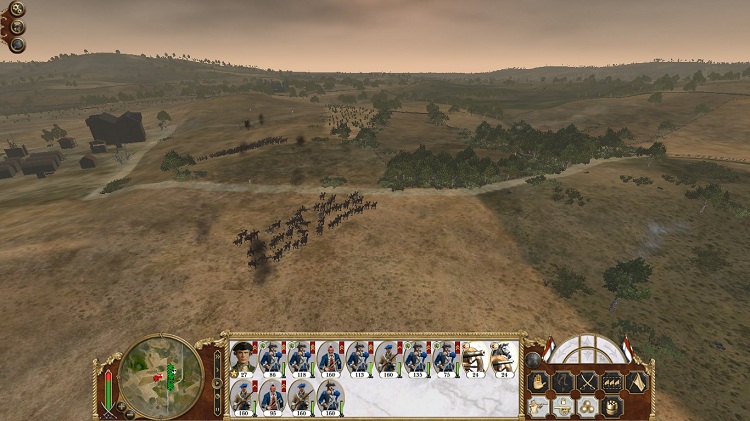
Dutch cannons tear into native cavalry.
 This revelation opened up great opportunities for the Dutch to press North against the British. With any additional forces that could be shuttled from the various island provinces the Dutch controlled being channeled against the British, the Dutch could afford both secure flanks and a progressively strengthened front using a reinforcing army behind the main army, letting the Dutch both progress and consolidate without slowing down their offensive push. Something they had previously though could only be afforded in India.
This revelation opened up great opportunities for the Dutch to press North against the British. With any additional forces that could be shuttled from the various island provinces the Dutch controlled being channeled against the British, the Dutch could afford both secure flanks and a progressively strengthened front using a reinforcing army behind the main army, letting the Dutch both progress and consolidate without slowing down their offensive push. Something they had previously though could only be afforded in India.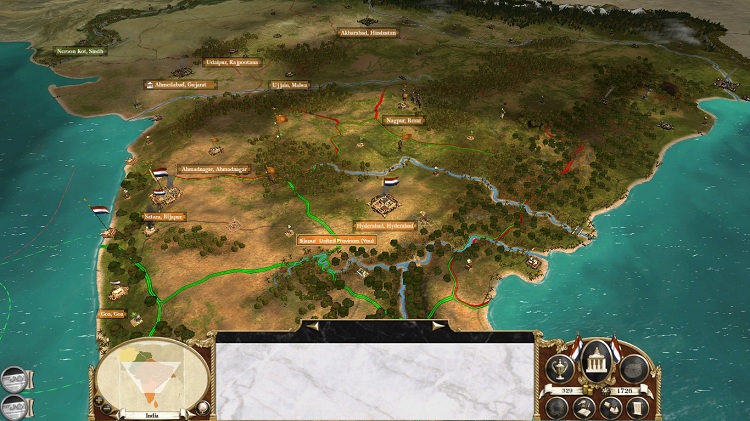
Dutch forces were concentrated in one or two armies per theater front, which meant they could not police their conquests and advance simultaneously. They hoped to fix this through the acquisition of more troops.
 These tenacious movements forward would later be referenced in the early 1900s as “bite and hold” tactics. While it would be applied to the drudgery of trench warfare, rather than provincial captures, the earlier Dutch conquests were an adequate comparison to the tactic. With the Dutch winding down to prepare for their new, continuous assault, the Dutch had to hold back until they could essentially add three additional armies to their current tally. This would take them years to accomplish.
These tenacious movements forward would later be referenced in the early 1900s as “bite and hold” tactics. While it would be applied to the drudgery of trench warfare, rather than provincial captures, the earlier Dutch conquests were an adequate comparison to the tactic. With the Dutch winding down to prepare for their new, continuous assault, the Dutch had to hold back until they could essentially add three additional armies to their current tally. This would take them years to accomplish. In the next broadcast of Empire: Total War, we will be looking at the wartime economy of the Dutch. Next we will be discussing Christ as a man. In half an hour, we will be discussing the rise of the mythical Christ. World news has been moved back an hour for today and for the rest of the Christmas season. If you want news of the current war in the Middle East please channel in to BBC radio 1. David Stephenson will be presenting more on the 80 years war in 3 days.
In the next broadcast of Empire: Total War, we will be looking at the wartime economy of the Dutch. Next we will be discussing Christ as a man. In half an hour, we will be discussing the rise of the mythical Christ. World news has been moved back an hour for today and for the rest of the Christmas season. If you want news of the current war in the Middle East please channel in to BBC radio 1. David Stephenson will be presenting more on the 80 years war in 3 days.